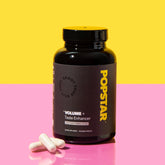Splooge is a casual, slang term often referring to semen, also known as male ejaculate. Although it may be used lightheartedly in everyday language, the correct medical term for this fluid is “semen.” Because the term “splooge” is so informal, its usage may vary in different contexts and cultural settings. Nonetheless, understanding this substance is key to men’s health, sexual wellness, and reproductive function. In this article, we will delve into what splooge really is, how it’s produced, its composition, its role in reproduction, myths surrounding it, and essential considerations for maintaining good sexual health. The goal is to offer both a thorough scientific explanation and an engaging look at this often-misunderstood bodily fluid.
Table of Contents
- What is Splooge?
- Composition of Splooge
- Function of Splooge
- Protecting and Enhancing Splooge Health
- Common Myths About Splooge
- Common Questions About Splooge
- References
What is Splooge?
Splooge is a prominent slang term used to describe semen, which is the fluid released by the male reproductive system upon ejaculation. In formal medical terminology, the term “semen” is preferred. Because the word splooge is informal, it’s important to recognize context when it is used—especially in men’s health settings—where precision and clear understanding are crucial.
Semen itself is a viscous, whitish fluid composed of sperm cells and various secretions from the male reproductive organs. The seminal plasma, or the supportive fluid, contains nutrients and protective mechanisms that help sperm cells survive once they leave the body. Each component of semen has a specific function that helps facilitate fertilization, maintain sperm health, and contribute to overall reproductive success.
When men ejaculate, the body orchestrates a complex release of fluids from several glands—including the seminal vesicles, prostate gland, and bulbourethral glands—that combine with sperm from the testes. Although the average volume of ejaculate per emission can vary, a common range lies around 2–5 milliliters. Even a small volume of ejaculate can contain tens of millions of sperm cells, which underscores its potency. Moreover, lifestyle factors like hydration, diet, and overall health can influence the characteristics (color, consistency, and volume) of splooge.
While mainstream media and casual conversation may trivialize the topic, understanding the composition and function of splooge is critical for discussing fertility, sexual health, and prevention of sexually transmitted infections. For men seeking to enhance fertility or those curious about men’s health, learning how lifestyle choices affect semen quality can be very helpful. By understanding what splooge actually is, it becomes easier to approach further men’s health topics with the knowledge necessary to maintain or improve reproductive wellbeing.
Composition of Splooge
Semen, the fluid often referred to as splooge, is a complex mixture of components. These components are produced by several different glands, each contributing distinct elements needed for healthy fertilization. While we commonly focus on sperm cells when discussing ejaculation, the majority of semen is actually made up of supportive and protective fluids:
- Sperm: The sperm cells originate in the testes and are responsible for fertilizing a female egg. Each sperm cell carries half the genetic material required to develop a new human life.
- Seminal Vesicle Fluid: This fluid comprises a significant portion of total seminal volume. It contains fructose, a type of sugar that acts as an energy source for sperm, and other substances that enhance sperm longevity.
- Prostatic Fluid: The prostate gland secretes a thin, milky fluid rich in enzymes such as prostate-specific antigen (PSA). These enzymes help liquefy the ejaculate, allowing sperm cells to move freely once inside the female reproductive tract.
- Bulbourethral (Cowper’s) Gland Fluid: Though typically small in volume, secretions from the bulbourethral glands help lubricate the urethra and neutralize any residual acidity that could harm sperm.
- Trace Elements and Nutrients: Splooge contains minerals like zinc and magnesium, along with vitamins that support sperm vitality and overall reproductive health.
Each of these components works synergistically to provide a stable environment for sperm. Together, they regulate pH levels, supply energy, and ensure that sperm can travel effectively once it enters the female reproductive tract. For instance, the typical pH range of semen is slightly alkaline (pH 7.2–8), which helps counter the naturally acidic environment of the vagina, improving the sperm’s chances of survival.
In some cases, the color, consistency, or smell of semen can change, and these variations can be influenced by factors like diet, medications, dehydration, or hormonal imbalances. A man’s eating habits, fluid intake, and general health can make an impact. For example, diets high in fruits and vegetables might slightly alter the taste or smell due to changes in chemical composition. Dehydration can lead to thicker or more concentrated ejaculate. While mild variations from day to day may be normal, significant or prolonged changes in color, odor, or texture can signal underlying health concerns and should be evaluated by a healthcare professional.
Understanding the composition of splooge goes beyond mere curiosity. For individuals or couples trying to conceive, the breakdown of fluids in semen is integral to assessing fertility health. Additionally, knowledge of the various components can inform discussions about men’s health, sexual well-being, and overall lifestyle habits. By appreciating the internal processes that produce, protect, and enhance sperm, men can take a more proactive approach to optimizing their reproductive system.
Function of Splooge
The primary function of splooge, or semen, centers on reproduction. When a man ejaculates, millions of sperm cells are transported via cervical canals into the female reproductive tract. Under healthy conditions, a certain fraction of these sperm will make their way to the fallopian tubes, where fertilization of an egg can take place, potentially leading to pregnancy. Beyond simply carrying sperm, splooge plays several critical roles:
- Nutritional Support: Seminal fluid provides an energy supply (primarily fructose) for sperm, fueling their journey toward the egg.
- Protection and pH Balance: The alkaline nature of semen helps protect sperm in potentially acidic environments, increasing their survival rates.
- Improved Motility: Enzymes released within the prostate fluid liquefy the ejaculate. This liquefaction process allows sperm to swim more freely.
- Transportation: The ejaculated fluid physically carries sperm from the male urethra into the female reproductive system, a path they could not easily navigate on their own.
Although the most highlighted role of splooge is tied to the possibility of conception, there are additional considerations relevant to men’s health. For instance, certain peptides and hormones within semen may have broader implications in sexual function and well-being. Some research also indicates that factors like stress can indirectly affect semen quality and male hormone levels, reflecting an intricate mind-body connection.
From an evolutionary standpoint, splooge is designed to optimize the chances of fertilization. The specialized composition of the fluid, including immunomodulatory substances, helps sperm evade unwanted immune responses within the female body. This symbiotic interplay of biology underscores just how important each piece of the semen puzzle is.
However, while reproduction is the leading role of splooge, ignoring research on other aspects does a disservice to men’s health. Discussions involving sexual and reproductive health, masturbation, or broader psychological benefits of orgasm are increasingly becoming normalized among healthcare professionals. As more clinical data emerges, the complexity and importance of splooge to a man’s holistic health become more apparent. Understanding its function is a step toward better reproductive outcomes and a healthier, more informed approach to sexual well-being.
Protecting and Enhancing Splooge Health
Maintaining healthy splooge (semen) involves more than just looking at one aspect of life in isolation. Because sperm production and seminal fluid composition are influenced by a variety of factors—ranging from dietary habits to environmental exposures—awareness of these factors plays a vital role in supporting men’s reproductive health. Below are some comprehensive strategies to help safeguard and potentially improve splooge quality.
1. Nutritional Choices: A balanced diet high in antioxidants, vitamins, and minerals can support robust sperm health. Key nutrients, such as zinc and selenium, are thought to enhance sperm motility and reduce oxidative stress. Fresh fruits, vegetables, whole grains, lean proteins, and healthy fats contribute positively to the broader categories of men’s health.
2. Hydration and Ejaculate Volume: Adequate fluid intake ensures that the body can produce enough seminal fluid. Poor hydration can lead to a reduced ejaculate volume and potentially alter the consistency or quality of the semen.
3. Exercise and Weight Management: Moderate exercise supports hormone balance, circulation, and stress reduction, all influential factors in sperm production. Extreme exercise regimens carried out without proper nutrition, however, can negatively affect testosterone levels. Strive for a healthy body weight, as obesity can be associated with hormonal imbalances that compromise sperm health.
4. Stress Management: Chronic stress can affect hormone levels, leading to fluctuations in testosterone and disruptions in sperm production. Mindful techniques, including meditation, yoga, or simply taking breaks, may help alleviate psychological burdens that can indirectly impact reproductive well-being.
5. Avoiding Harmful Substances: Excessive alcohol intake, recreational drug use, and smoking can diminish sperm count and motility. Substances like nicotine have been linked to DNA damage in sperm and disruptions in hormone levels.
6. Limiting Exposure to Toxins: Some chemicals and environmental factors (e.g., industrial chemicals, heavy metals, radiation) have been associated with reduced sperm quality. Those working in high-risk industries should adopt safety measures, such as protective clothing and limiting direct contact with hazardous substances.
7. Regular Check-ups: Routine medical evaluations, including screenings for sexually transmitted infections (STIs) and general health examinations, can detect early warning signs that might compromise sperm quality.
By addressing these lifestyle factors, men can take meaningful steps to support healthy fertility outcomes. Protecting splooge health is a holistic endeavor, intertwined with overall wellness. This awareness helps men care for their reproductive systems proactively, whether their goals include fatherhood or simply maintaining robust quality of life. If concerns or significant changes in semen quality arise, consulting a healthcare professional or a fertility specialist provides insights tailored to individual needs.
Common Myths About Splooge
Like many aspects of sexual and reproductive health, splooge (semen) has its share of myths and misunderstandings. Many of these stem from popular culture, misinformation on the internet, and generational taboos around openly discussing men’s reproductive health. Below are some of the prevailing myths and the facts that help debunk them.
Myth 1: Splooge Volume Equates to Fertility
While a certain volume of ejaculate is important, fertility depends more on sperm quality—motility, morphology, and total sperm count—than on sheer quantity. Some men have relatively low ejaculate volume but maintain high-quality sperm.
Myth 2: Splooge has Zero Nutritional Content
Semen is sometimes thought of as merely a “delivery mechanism” for sperm. In reality, it contains vitamins, minerals, and proteins. Although the amounts might be small compared to a regular diet, the necessary nutrients are there to support sperm survival.
Myth 3: Ejaculation Frequency Doesn’t Affect Quality
While daily ejaculation doesn’t necessarily “deplete” sperm instantly, excessive frequency could slightly reduce the sperm count per ejaculation. Balancing reproductive goals—such as trying to conceive—and personal well-being often requires moderation.
Myth 4: Appearance Always Predicts Health Status
Color, texture, or thickness can vary with diet, hydration, or short-term changes in the body. Although sudden or dramatic changes may warrant a medical evaluation, many mild day-to-day variations are completely normal.
Myth 5: No Variability in Semen Quality Over Time
Sperm production is a continuous process, and quality can be influenced by illness, stress levels, sleep patterns, and overall health. Tracking changes over longer periods can be more informative than focusing on single instances.
Myth 6: Oral Contraceptives for Females Impact Male Semen
Some believe that a female partner’s use of oral contraceptives could directly alter a man’s ejaculate. There is no evidence that these hormones have any effect on spermatogenesis or semen composition. Each partner’s reproductive system is distinct, and medications typically do not cross over to affect the other partner through intercourse.
By clarifying misconceptions around splooge, men are better equipped to focus on concrete health practices and explore legitimate concerns with a qualified healthcare professional. Realizing that many widespread beliefs lack scientific support helps streamline decisions around fertility and sexual wellness.
Common Questions About Splooge
Is splooge different from semen?
Essentially, no. “Splooge” is a slang term used in popular culture or casual conversation to refer to semen or ejaculate. Medically, semen is the correct term. However, the content and meaning remain the same: a fluid composed of sperm cells and secretions from various glands in the male reproductive system.
Can splooge carry sexually transmitted infections (STIs)?
Yes, ejaculated semen can carry pathogens responsible for STIs, including HIV, gonorrhea, and chlamydia. It is crucial to use protection (such as condoms) during sexual activities, especially when STI status is unknown. Regular testing is also essential if you are sexually active with new or multiple partners.
How does diet affect the taste or smell of splooge?
While no definitive medical guidelines establish a strict correlation, many men and their partners report that diets high in fruits, vegetables, and proper hydration can somewhat influence the taste or smell of semen. Highly processed and spicy foods, alcohol, and tobacco may impact odor more noticeably.
Does frequent masturbation impact sperm quality?
Frequent ejaculation from masturbation or sexual intercourse may slightly reduce the sperm count per emission, simply because the body has less time to replenish sperm stores. However, this does not necessarily eliminate sperm quality if there are no other underlying health issues. Moderation and understanding personal goals (such as family planning) are key considerations.
Can stress or lack of sleep change splooge quality?
Yes. Chronic stress and insufficient sleep can alter hormone levels, particularly testosterone, which plays a vital role in sperm production. Poor sleep patterns might affect body weight and metabolism as well, adding further complications to men’s reproductive health. Maintaining balanced stress levels and aiming for 7–9 hours of sleep each night generally promotes better outcomes.
Is it normal for splooge to vary in color?
It can be normal to see slight color variations (ranging from off-white to a mild grayish hue), depending on hydration and diet. However, if semen appears yellowish, greenish, or contains visible blood, it may indicate infection or inflammation. Consult a healthcare provider if abnormalities persist or are accompanied by pain or discomfort.
What role do hormones play in splooge production?
Testosterone, produced mostly in the testes, is the primary hormone regulating sperm production. Hormonal imbalances—caused by factors such as conditions that affect the testes or the pituitary gland—can impede the body’s ability to create healthy sperm. Men experiencing fertility issues or other concerns should have their hormone levels evaluated as part of a broader diagnostic regimen.
Does age affect the quality and quantity of splooge?
Men can produce sperm throughout their lives, but sperm quality, motility, and count may gradually decline with advancing age. Certain genetic mutations in sperm may also increase as a man gets older. Although not as definitive a timeline as for women’s fertility, age should be respected when planning a family. Older fathers may face slightly increased risks for specific conditions in offspring.
Can certain medications interfere with semen production?
Yes. Some prescription medications can inhibit sperm output or reduce overall semen volume. This includes certain antidepressants, anabolic steroids, and chemotherapy drugs. Men who are planning to conceive or monitoring their reproductive health should discuss medication risks and alternatives with their healthcare provider.
Why might splooge sometimes leak after ejaculation?
Leakage from the penis post-ejaculation can be related to the normal process of semen collecting in the urethra. Some men may notice drips shortly after orgasm. However, if the leakage is excessive, discolored, or odorous, it’s wise to consult a medical professional to rule out potential infections or structural abnormalities in the reproductive tract.
Should I see a healthcare professional if I notice major changes in my splooge?
Yes. Marked changes in color, smell, or consistency—especially when accompanied by pain, discomfort, or other symptoms—could signal an infection or another underlying condition. Consulting a healthcare professional ensures timely detection and management of potential men’s health issues.
References
- National Institutes of Health (NIH). Male Reproductive System Basics.
https://www.nih.gov/. - World Health Organization (WHO). Laboratory Manual for the Examination and Processing of Human Semen.
https://www.who.int/publications/en/. - American Urological Association (AUA). Male Infertility Analysis and Resources.
https://www.auanet.org/. - Dimitrios Kioumourtzoglou et al. (2020). Environmental Chemicals and Male Reproductive Health.
Environmental Research, 187. - Zimmerman, E. et al. (2019). Nutritional Influences on Sperm Quality.
Journal of Andrology, 40(2).


































